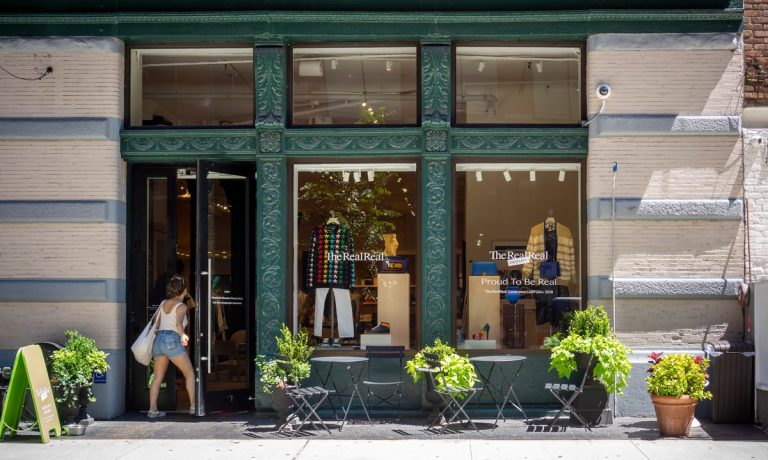The RealReal Pauses Retail Rollout Amid Improvements In Business

Sales at The RealReal are growing like crazy as the post-pandemic recovery continues and new and returning customers reach record levels, but the luxury consignment marketplace is still struggling to make a profit and executives say they are unwilling to provide a timeframe for when it may become profitable.
The RealReal suffered during the pandemic perhaps more than its reCommerce competitors both because of its focus on luxury consignment and its retail stores that were forced to close at the height of COVID-19’s spread. Over the past several months, though, as the pandemic has waned, the company has been able to resume at-home consignments and reopen retail locations, contributing to a rebound.
“We’re feeling very optimistic about where we are, not only coming out of COVID but just in general,” Chief Financial Officer Matt Gustke told investors on a conference call.
The RealReal said it achieved gross merchandise volume (GMV) of $350 million in the second quarter, its highest second quarter GMV to date and a 91 percent year-over-year jump. Compared to 2019, GMV increased 53 percent. Despite this, the San Francisco-based platform had a net loss of nearly $71 million, or 50 cents per share.
Retail stores brought in approximately 30 percent of The RealReal’s new consignors in the second quarter, and the company opened new stores in Austin, Texas, Dallas, and Atlanta; with an additional store opening in California last month, The RealReal now operates nine neighborhood stores.
Though Founder and CEO Julie Wainwright said The RealReal’s retail stores “continue to perform very well,” particularly in driving new customer acquisition and supply, the one or two stores opening in the coming months will be the last ones for the time being. The company plans to pause its retail rollout in order to optimize performance and gather data from the existing stores in order to inform future strategy.
Wainwright said, though, that the company is planning to expand and reconfigure part of its New York City flagship store to allow it to take in more consignment, a sign of improving business.
According to a report by secondhand clothing platform thredUP and Global Data released in June, the $36 billion secondhand market — $15 billion of which is resale and $21 billion of which is traditional thrift and donation — is expected to reach $77 billion by 2025. Approximately $47 billion of that is projected to be in resale, which thredUP defines as the sector of secondhand that includes “more curated assortments.”
Related: ThredUP’s Resale Market Projections Spell More Trouble For Department Stores
The executives declined to provide a timeline for when The RealReal would achieve profitability, but said they expect to make “significant progress” over the next 18 months.
“We feel confident about next year,” Wainwright said. “We do recognize … the Delta variant is a wild card. But assuming there are no complete shutdowns again, which we don’t foresee, we feel good about our future here.”
Investing In Infrastructure
The RealReal has spent the last several months investing in its technology and infrastructure, which Wainwright said have provided business efficiencies and allowed the platform to introduce new features. In the second quarter, The RealReal started using artificial intelligence (AI) and machine learning to optimize prices.
“Our goal is to get the absolute highest price without a falloff in the velocity of sales,” Wainwright said. In general, she noted, the platform has seen a $10 increase in unit price across the board based on its use of technology.
“Obviously the consigner if the prices are higher, and certainly we get our fair share of that,” the CEO told investors.
Additionally, The RealReal expedited its move to a larger authentication center in Phoenix, Arizona, with the facility processing products starting in June. The new facility has significantly more capacity than the California-based center it had been using, which will support growth and reduce average fixed cost per order because of lower occupancy costs.
Part of that growth includes forays into new categories, including collectibles, that The RealReal began last month. Wainwright told investors it’s too early to make projections, given that it’s only been a few weeks, but said she expects the new “luxury lifestyle” categories to increase the platform’s total addressable market.
Gustke noted that the category growth shouldn’t change The RealReal’s business, as it leverages the platform’s existing sales and authentication structure. “It’s just making better utilization of those things,” he said.